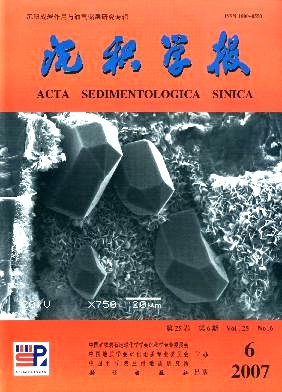Effect of Sequence Boundary on Sandstones Diagenesis and Reservoir Quality: 〖WTBZ〗an outcrop study from the Upper TriassicYanchang Formation, Ordos Basin, Northwest China
- Received Date: 1900-01-01
- Rev Recd Date: 1900-01-01
- Publish Date: 2007-12-10
-
Key words:
- sequence boundary /
- diagenesis /
- reservoir quality /
- Yanchang Formation /
- Yanhe River Outcrop /
- Ordos Basin /
Abstract: Diagenesis and reservoir quality in sandstones are important research scopes for petroleum exploration. Taking the delta front to delta plain facies from upper Chang 7 to middle Chang 4+5 member of Yanchang Formation, Yanhe River outcrop, eastern Ordos Basin as an example, this paper addresses the differences of authigenetic minerals, porosity types, petrophysical attributes and oilshowing in sandstones between baselevel semirising and semidowning cycles, and their origins. Both of abundant laumontite and early calcite cement in concretion prevent the formation of authigenetic minerals including chlorite, chlorite/smectite, quartzovergrowth and albiteovergrowth in baselevel semidowning cycle under the 3rd sequence stratigraphic boundary surface, whereas authigenetic chlorite, chlorite/smectite, quartzovergrowth and albiteovergrowth are relatively well developed resulting from poor development of laumontite cement owing to lack of tuffaceous deposites and lower formation temperature, and lack of early calcite cement due to little influence of lake in baselevel semirising cycle above the 3rd sequence stratigraphic boundary sequence. The 3rd sequence boundary surface together with well developed Chang16sandbodies immediately above the sequence boundary surface was the predominant fluid conduits through which acidic fluid, which dissolved laumontite and calcite cement and feldspar grains, and oil migrated originated from the mature source rocks.
| Citation: | LUO Zhong. Effect of Sequence Boundary on Sandstones Diagenesis and Reservoir Quality: 〖WTBZ〗an outcrop study from the Upper TriassicYanchang Formation, Ordos Basin, Northwest China[J]. Acta Sedimentologica Sinica, 2007, 25(6): 903-914. |






 DownLoad:
DownLoad: